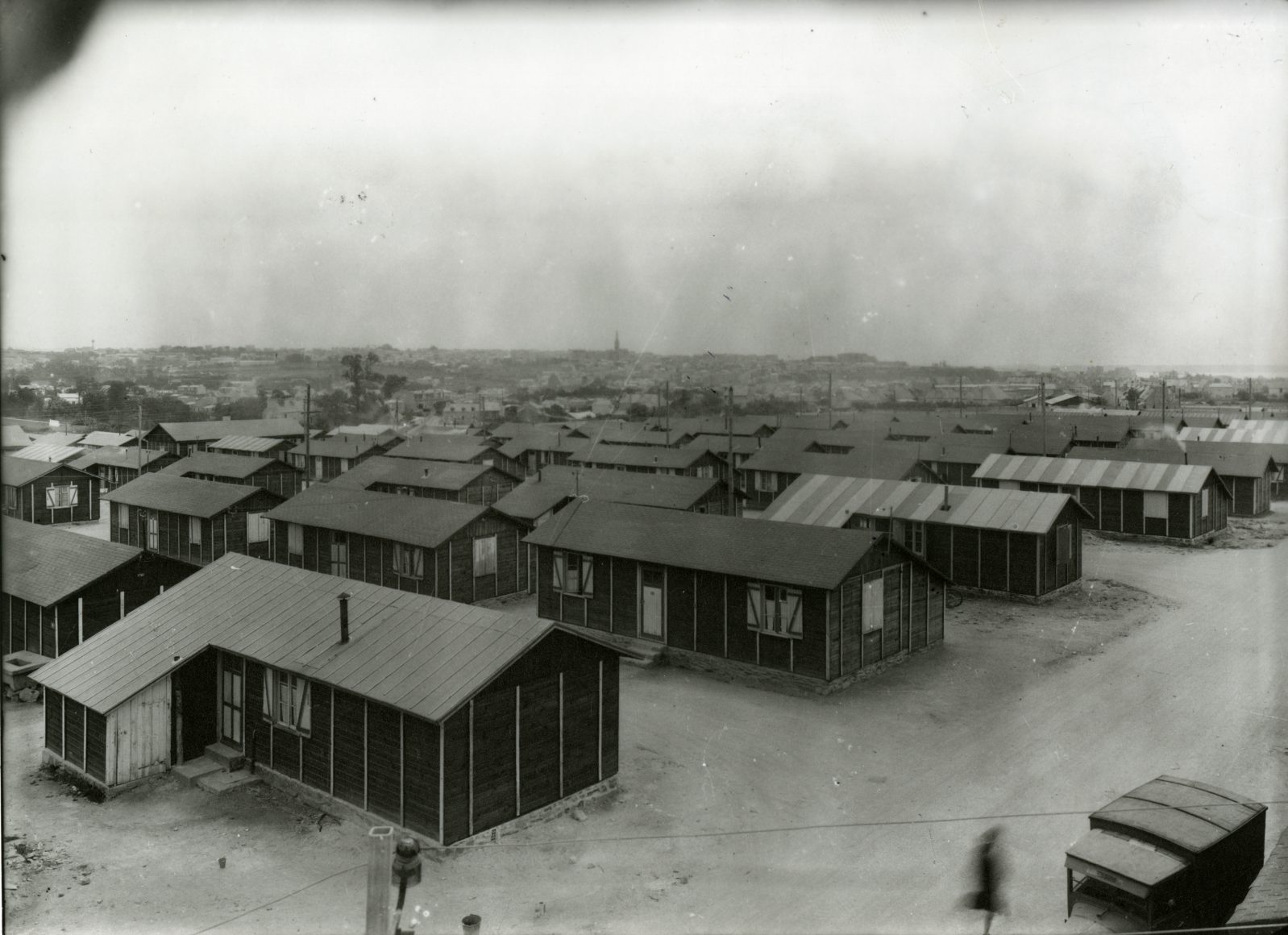Kerédern prefabs, around 1950, Brest Municipal Archives.
The reconstruction of Brest’s city centre began at a rapid pace after the war. The people of Brest were placed in temporary housing estates made-up entirely of prefabricated buildings. These small wooden houses, which were a life-saving emergency solution, were delivered for the most part by the Americans in kit form.
This photograph from the Municipal Archives shows the Kerédern housing estate which sprung up like a small town in the middle of the countryside. The prefabs, arranged in regular rows, were equipped with modern amenities to which the inhabitants of Brest, for the most part, had not had access before the war. Each house had a number which became the address of its occupant who was housed there for a small fee. The streets had no names. The shacks all looked the same but varied in size.
Despite this apparent austerity, life in the prefabs was organised with enthusiasm and solidarity. A form of unpremeditated social utopia took shape there for some years. It made people believe in the possibility of collective happiness, illustrated by children playing together in the streets and neighbours sharing meals.
Gradually, the people living in the prefabs became rather attached to their temporary homes, which they personalised to their liking and which they never wanted to leave. For some of them, the move to apartment buildings was very difficult.
Sonia de Puineuf

